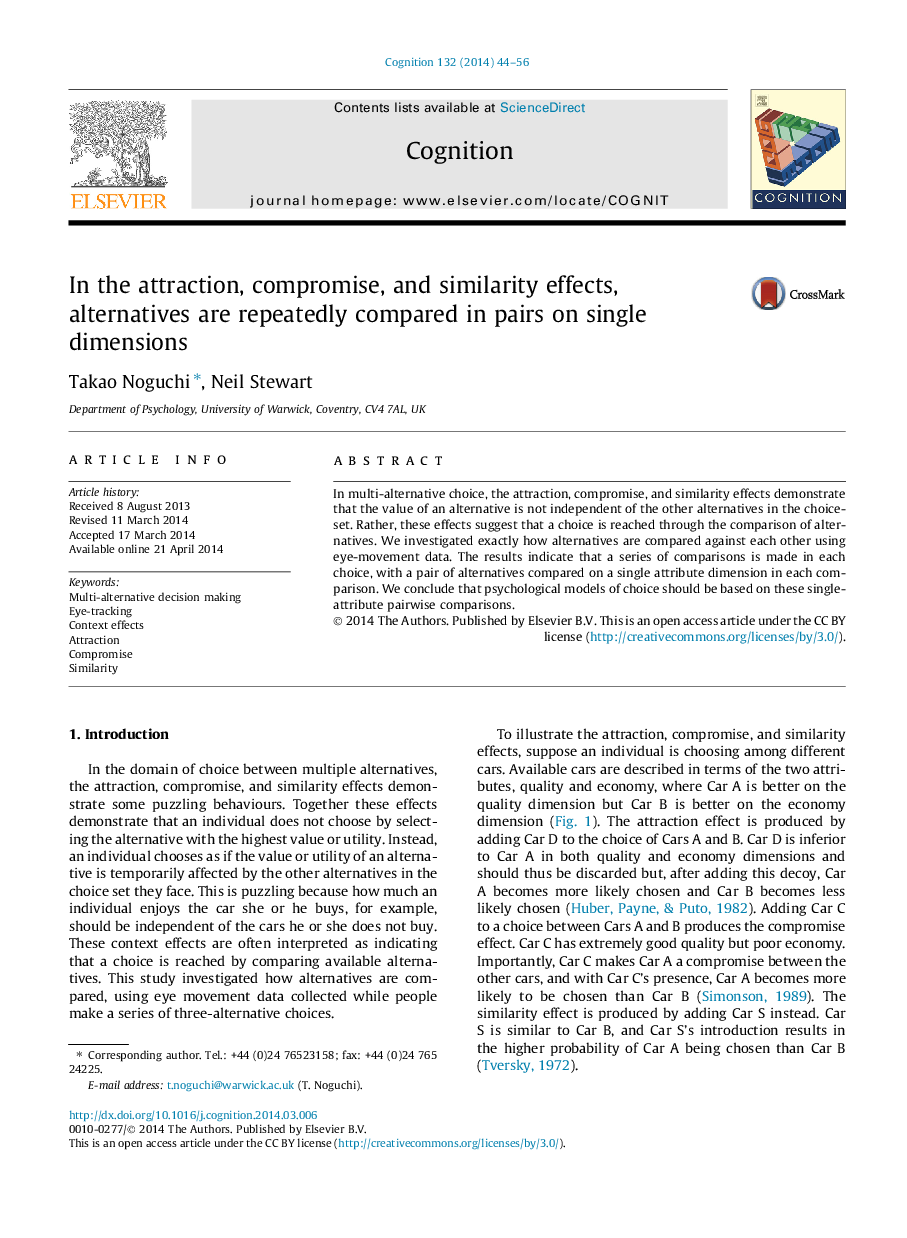| Article ID | Journal | Published Year | Pages | File Type |
|---|---|---|---|---|
| 10457756 | Cognition | 2014 | 13 Pages |
Abstract
In multi-alternative choice, the attraction, compromise, and similarity effects demonstrate that the value of an alternative is not independent of the other alternatives in the choice-set. Rather, these effects suggest that a choice is reached through the comparison of alternatives. We investigated exactly how alternatives are compared against each other using eye-movement data. The results indicate that a series of comparisons is made in each choice, with a pair of alternatives compared on a single attribute dimension in each comparison. We conclude that psychological models of choice should be based on these single-attribute pairwise comparisons.
Related Topics
Life Sciences
Neuroscience
Cognitive Neuroscience
Authors
Takao Noguchi, Neil Stewart,
